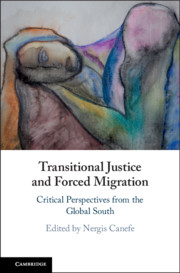Book contents
- Transitional Justice and Forced Migration
- Transitional Justice and Forced Migration
- Copyright page
- Dedication
- Contents
- Contributors
- Preface
- Acknowledgements
- Abbreviations
- In Lieu of an Introduction
- Part I The Past as the Memory of the Future
- Part II Law, Justice, and Hope
- 4 Transitional Justice, Displacement, and the Rights of the Young
- 5 Beyond Agreements
- 6 State-Based Truth Commissions
- 7 The Right of Return in Iraq
- Part III Ethics of Witnessing
- Index
- References
7 - The Right of Return in Iraq
Conceptualizing Insecurity, State Fragility, and Forced Displacement
from Part II - Law, Justice, and Hope
Published online by Cambridge University Press: 24 October 2019
- Transitional Justice and Forced Migration
- Transitional Justice and Forced Migration
- Copyright page
- Dedication
- Contents
- Contributors
- Preface
- Acknowledgements
- Abbreviations
- In Lieu of an Introduction
- Part I The Past as the Memory of the Future
- Part II Law, Justice, and Hope
- 4 Transitional Justice, Displacement, and the Rights of the Young
- 5 Beyond Agreements
- 6 State-Based Truth Commissions
- 7 The Right of Return in Iraq
- Part III Ethics of Witnessing
- Index
- References
Summary
Transitional justice aspires to dealing with the aftermath of large-scale international crimes perpetrated during dictatorships, in countries at war, or as a result of organized crime. Scholars, diplomats, politicians, activists, community leaders, and United Nations officials have long recognized the resettlement and reintegration of refugees and internally displaced persons (IDPs) as an essential pillar of transitional justice. In particular, the post-conflict reconstruction efforts in post-1948 Israel and Palestine, and during the post-1995 era in the Balkans, prioritized the legal obligation of states to permit refugees and IDPs to return to their homes and become full members of society.
Information
- Type
- Chapter
- Information
- Transitional Justice and Forced MigrationCritical Perspectives from the Global South, pp. 158 - 190Publisher: Cambridge University PressPrint publication year: 2019
